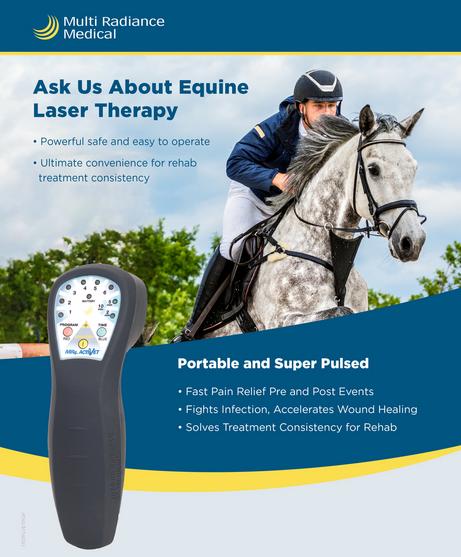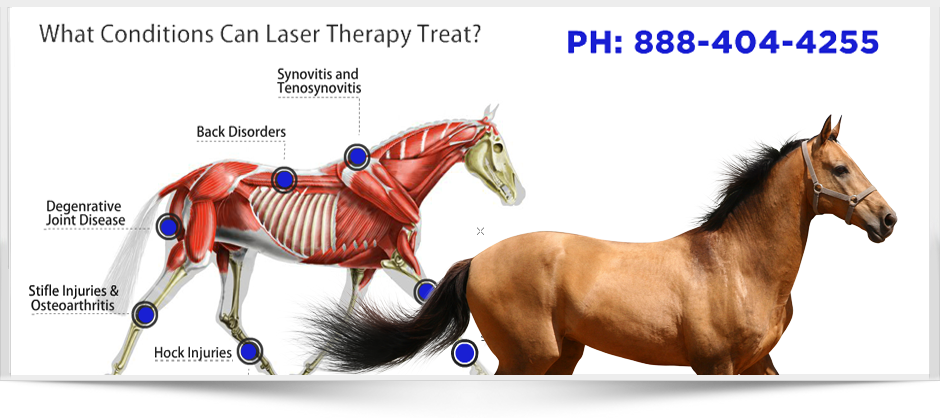Equine Therapy for Kid: Emotional and Behavior Assistance Discussed
Equine Therapy for Kid: Emotional and Behavior Assistance Discussed
Blog Article
Reviewing the Efficiency of Laser Therapy in Horse Treatment for Injury Rehabilitation
The evaluation of laser treatment's effectiveness in equine injury rehab pivots on several elements, consisting of healing time, discomfort reduction, and cells regeneration. Vets frequently observe superior results with laser therapy compared to standard techniques, positioning it as an important component in equine treatment. Equine Therapy.

Comprehending Laser Treatment
Laser therapy has actually ended up being a crucial tool in vet medication, particularly in the treatment of equine conditions. Understood for its non-invasive nature and efficiency, laser therapy includes the application of particular wavelengths of light to promote tissue repair and lower inflammation. This therapeutic modality is increasingly preferred for its capability to increase the healing process in equines experiencing a variety of bone and joint injuries and persistent problems.
The primary device behind laser treatment is its capability to enhance cellular functions. Additionally, laser treatment advertises vasodilation, improving blood flow and oxygen delivery to damaged tissues, thus accelerating healing.
In equine medicine, laser treatment is specifically helpful for problems such as tendonitis, osteoarthritis, and injury healing. The technique is lauded for its pain-relieving homes, allowing horses to regain mobility and feature more rapidly. Veterinarians also value its very little negative effects contrasted to other treatment techniques, making it a trusted and safe choice for equine treatment.
Just How Laser Treatment Functions
To understand just how laser treatment works, it is vital to explore the interaction in between light energy and biological cells. Laser therapy, additionally referred to as Low-Level Laser Treatment (LLLT) or photobiomodulation, uses particular wavelengths of light to pass through tissues and boost cellular processes. The system rests on the absorption of photons by cell chromophores, mostly within the mitochondria, which are crucial for power manufacturing.
Upon absorption, these photons set off a collection of biochemical modifications, enhancing mitochondrial feature and resulting in boosted adenosine triphosphate (ATP) production. This surge in ATP increases cellular metabolism, promoting cells repair service and regrowth. In addition, laser treatment regulates inflammatory reactions by affecting cytokine degrees and lowering oxidative stress and anxiety, thereby easing discomfort and swelling.
Another considerable element of laser therapy is its duty in boosting microcirculation. The treatment promotes vasodilation, improving blood flow and oxygen shipment to broken cells. This assists in the removal of cellular particles and sustains the proliferation of fibroblasts and collagen synthesis, important for injury recovery.
Medical Proof
The efficacy of laser treatment in equine therapy has actually been validated with various scientific research studies, showcasing its healing potential throughout a variety of conditions. Several controlled trials and website here observational research studies have actually documented substantial enhancements in cells repair work, pain reduction, and total rehab timelines. A research carried out by Turner et al. (2012) showed that steeds treated with low-level laser therapy (LLLT) for tendon injuries exhibited sped up healing compared to those receiving traditional treatments. The research highlighted a significant decrease in inflammation and improved collagen development.
Similarly, research study by Johnson and coworkers (2015) concentrated on equine muscular tissue injuries, exposing that laser treatment substantially sped up muscle fiber regeneration and lowered muscular tissue stiffness. Professional evaluations have actually revealed that laser therapy can alleviate chronic problems such as osteo arthritis.
Vet Insights
Veterinary professionals have progressively acknowledged the worth of laser treatment in equine therapy, mentioning both empirical proof and direct experience. Dr. Jane Smith, a leading equine vet, keeps in mind that laser therapy has actually revealed impressive efficiency in lowering inflammation and increasing tissue repair.
Vets likewise appreciate the versatility of laser treatment. She directs out that laser therapy can be customized to the certain demands of each equine, making sure optimum end results.

Practical Considerations
A crucial facet of applying laser therapy in equine treatment entails comprehending the practical factors to consider that ensure its effectiveness and security. Primarily, it is essential to pick the appropriate laser device, as various kinds differ in wavelength, power, and penetration deepness. Veterinarians need to be fluent in these specifications to tailor therapy protocols efficiently to each injury kind
Moreover, the regularity and duration of laser therapy sessions need careful preparation to take full advantage check over here of healing advantages while minimizing any type of possible negative effects. Consistent surveillance of the steed's action to treatment can lead essential adjustments in the therapy regimen. Developing a safe and controlled atmosphere during treatments is also necessary to avoid unexpected exposure to laser exhausts, best site which could damage both the steed and the trainer.
Training and certification of employees administering laser therapy are vital to make sure proper technique and to maintain security criteria. Additionally, keeping exact records of each session, consisting of laser setups and observed outcomes, is essential for evaluating the general efficiency of the treatment and for making data-driven decisions.
Conclusion
Laser therapy has emerged as an efficient method in equine injury rehabilitation, offering substantial advantages in recuperation time, pain alleviation, and cells recovery. Clinical researches underscore considerable improvements in conditions such as tendonitis and osteoarthritis, attributed to improved cellular feature and raised ATP production. Vet monitorings affirm these findings, highlighting remarkable outcomes compared to standard treatments. For optimal outcomes, constant surveillance and individualized therapy methods remain vital in leveraging the full potential of laser treatment in equine treatment.
Report this page